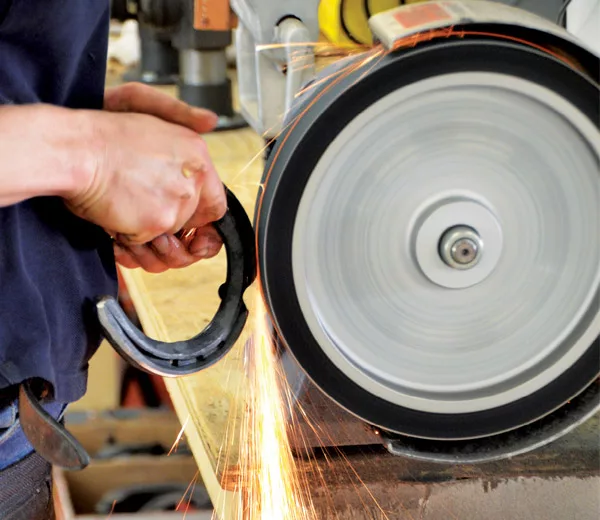American Farriers Journal
American Farriers Journal is the “hands-on” magazine for professional farriers, equine veterinarians and horse care product and service buyers.

When it’s time to replace your grinding belt, you’ll find a spectrum of colors await at the farrier supply shop or hardware store display. The hues and shades before you aren’t necessarily random.
In the course of manufacturing tools at Bloom Forge in Drummond, Wis., Roy Bloom has the opportunity to employ a number of grinding belts for various tasks — everything from aggressive grinding to polishing tools.
While you might not consume as many belts as Bloom, the colors can offer you some indication of what to expect from them.
“You’re going to see blues, reds, greens, browns — all kinds of colors,” says the International Horseshoeing Hall Of Fame member. “What are they?”
Blue. Generally, a blue belt consists of zirconia crystals.
“Zirconia is the hardest crystal in grinding belts,” Bloom explains. “It is used for super aggressive grinding.”
As such, if you’re not using it for this purpose, the belt simply won’t work properly for you.
A 40-grit belt is well suited for the aggressive nature of removing material from a horseshoe. A higher grit belt is used to polish farrier tools.
The finer the grit, the quicker the metal gets hot. Be sure to cool your heat-treated tools often to avoid removing the temper.
Generally, the color on the belt is a coolant that the manufacturer has sprayed on the belt.
The crystals on a grinding belt must be able to chip and break to maintain continuously sharp cutting edges. If the material you…